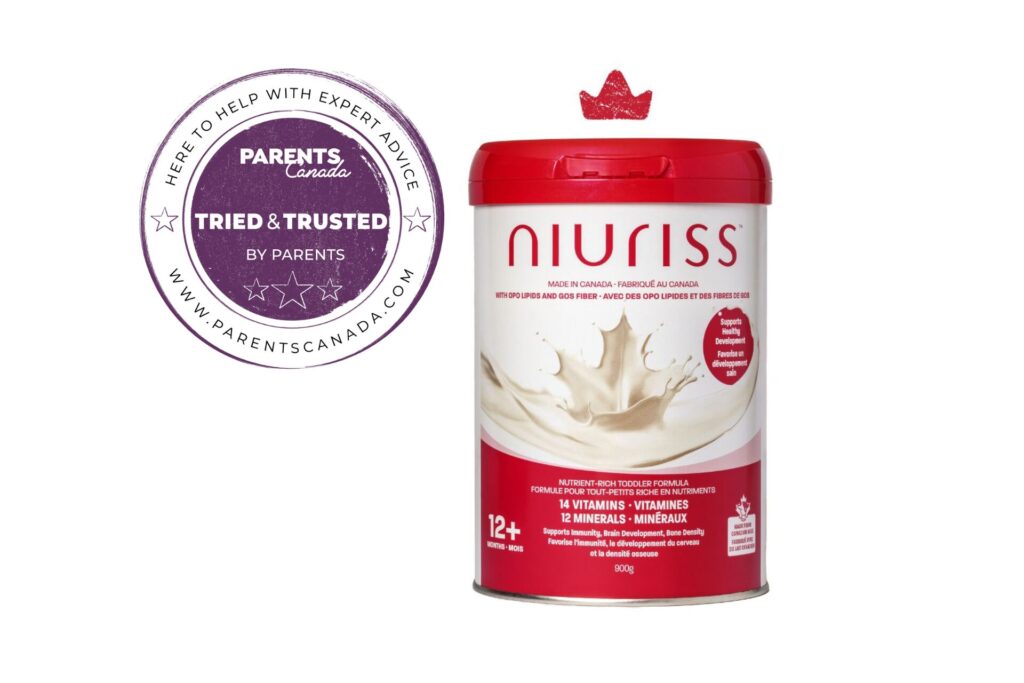During your baby's first year, she grew quickly, probably tripling her weight in one year. She enjoyed trying new foods and learning to feed herself. Then, quite suddenly, her growth rate will slow down and she will not be so hungry. She may develop strong likes and dislikes or lose interest in a food after only one bite. Your toddler can be very opinionated about food.
Now it is important for you to remember the division of responsibility. You are responsible for what your child eats and when and where she eats. Your responsibility is to establish a healthy pattern of meals and snacks. Your toddler decides how much and whether to eat. Her appetite will vary from day to day, but she will eat what she needs. An occasional skipped meal is not cause for concern.
Tips For Feeding Toddlers
- You decide on the menu. Don't ask your child what they want to eat ahead of time
- Offer regular meals and snacks. Offer only water in between.
- Once at the table, let your toddler decide how much to eat from what you are offering.
- Serve foods that are soft and easy for your toddler to eat. Do not feed your toddler. Let her feed herself, and drink from a cup herself. Expect her to be a messy eater.
- Offer new foods or foods your toddler didn't like the first time with something that she already likes to eat. Encourage her to try at least one bite of a new food.
- Don't try to get your toddler to eat more than she wants or try to get her to eat something she doesn't want to eat.
- Limit meal times to longer than 20 to 30 minutes.
- Keep meal times relaxed and pleasant. It's best to turn off the television.
- Always stay with your child when she is eating to make sure she is safe.
Examples Of Child-Size Servings
A child-size serving is anywhere from one-half to the full serving size for adults, for each of the food groups in Canada's Food Guide to Healthy Eating. The serving size increases with age. For example, a two-year-old may eat half of a slice of bread, but a four-year-old is more likely to eat a whole slice. Both of these can be counted as one child-size serving of grain products.
Daily Food Guide for Toddlers
| Food Group | Example of one toddler-size serving |
| Grain Products | 1/2 to 1 slice bread 125 to 250 ml (1/2 to 1 cup) flaked cereal 250 to 500 ml (1 to 2 cups) puffed cereal 75 to 175 ml (1/3 to 3/4 cup) hot cereal 1/4 to 1/2 bagel, pita or bun 1/2 to 1 muffin 50 to 125 ml (1/4 to 1/2) cup pasta or rice 4 to 8 soda crackers |
| Vegetables and Fruits | 1/2 to 1 medium-size vegetable or fruit 50 to 125 ml (1/4 to 1/2 cup) fresh, frozen or canned vegetables or fruit 125 to 250 ml (1/2 to 1 cup) salad 50 to 125 ml (1/4 to 1/2 cup) juice |
| Milk Products | 15 to 50 g cheese 75 to 175 ml (1/3 to 3/4 cup) yogurt (Preschoolers should consume a total of 500 ml (2 cups) of milk every day.)
|
| Meat and Alternatives | 25 to 50 g meat, fish or poultry 1 egg 50 to 125 ml (1/4 to 1/2 cup) beans 50 to 100 g (1/4 to 1/3 cup) tofu 15 to 30 ml (1 to 2 tbsp.) peanut butter |
Adapted from Canada's Food Guide to Healthy Eating: Focus on Preschoolers
Feeding Your Preschooler – Two to Five Years
Using Canada's Food Guide to Healthy Eating for the whole family makes sense because children adapt the same eating patterns as their families. The Food Guide gives a lower and higher number of servings for each food group. This makes the Food Guide flexible for use for family members with different needs. Using child-size servings, the following guidelines apply to preschoolers:
- Grain products: five to 12 servings
- Vegetables and fruit: five to 10 servings
- Milk products: two to three servings
- Meat and alternatives: two to three servings
Preschoolers will generally choose child-size servings around the lower end of the range for grain products and vegetables and fruit. Although adults should limit higher fat foods such as peanut butter and cheese, the fat in these foods helps preschoolers get enough calories. This is especially important for preschool and younger children who eat smaller amounts of food.
What To Expect From Your Preschooler
Expect your preschooler to be curious. Your preschooler may experiment with her food by smelling it, squishing it, peeling it or touching it all over before she tastes it. “Why?” is a frequent question, especially by four- and five-year-olds. They may want to know why blueberries are blue, for example.
Your preschooler wants to be independent. Two- and three-year-olds are striving for greater independence. Whether or not to eat a certain food is something they can control. They may insist on a particular food one day, and refuse it the next. Meanwhile, four- and five-year-olds like being ‘grown-up' by helping adults choose foods at the grocery store and then helping to prepare and serve it at home. They will love it if you let them help you in the kitchen.
Your preschooler needs structure. Most prefer meals and snacks on a regular schedule. Many preschoolers insist on having their milk in a certain cup, or food cut in certain shapes or the same food for lunch over and over. They may refuse to try new foods.
A growing sense of purpose. When hungry, young children will focus on eating. Then, they turn their attention elsewhere. Playing with their spoon may become more important than eating. It is normal for preschoolers to dawdle over mealtimes.
Preschoolers imitate people around them. Children pick up messages about what others think of foods. You are a role mode for your child. She will pick up your food likes and dislikes, healthy or unhealthy. She will also develop the same attitudes to issues such as weight management.
Pulling It All Together
Healthy eating can be fun and full of pleasure for you and your family.
It doesn't take rocket science, just a bit of planning and thought. As a
parent, your job is to be confident about setting limits while giving
your child healthy choices. The good food habits your child develops
will last a lifetime.
What About Vitamin And Mineral Supplements?
If
your child is eating a variety of healthy foods in a pattern of meals
and snacks that follows Canada's Food Guide for Healthy Eating, a
vitamin-mineral supplement is likely not needed. Healthy foods are rich
in nutrients and in the right balance to meet your child's needs. There
are few special situations in which a supplement might be necessary, for
example, a vitamin D supplement if your child does not consume Vitamin D
fortified milk. But usually it is possible to improve your child's
eating pattern rather than give supplements.
Using
vitamin/mineral supplements should be discussed with your doctor or
dietitian. If you have supplements in your home, treat them like
medication. Avoid an overdose by keeping them out of reach of your
child.
Your Child's Weight
More children are
overweight than ever before. This is mostly due to unhealthy eating
habits and lack of physical activity. Busy parents say they lack to the
time to prepare healthy meals and snacks. They say it is hard to resist
the taste and convenience of high calorie salty snacks like chips, sweet
snacks and sugary drinks.
Although it takes some effort, the
best way to help your child have a healthy weight is to prevent
overweight by developing healthy eating and active living habits at a
young age. Once overweight, a child is less likely to be physically
active and burn off excess calories. As a parent, you can be a role
model. If your child sees you enjoy being physically active and enjoying
healthy food, he or she will be more likely to want to do the same.
Best of all is to enjoy healthy eating and being active together.
Taken from The Canadian Baby & Child Care Encyclopedia










